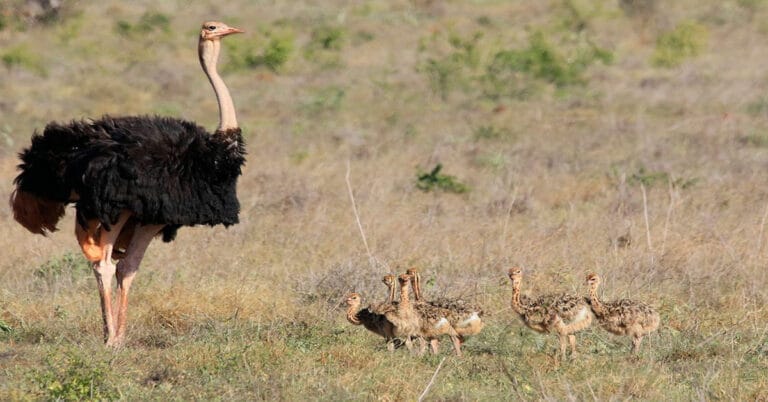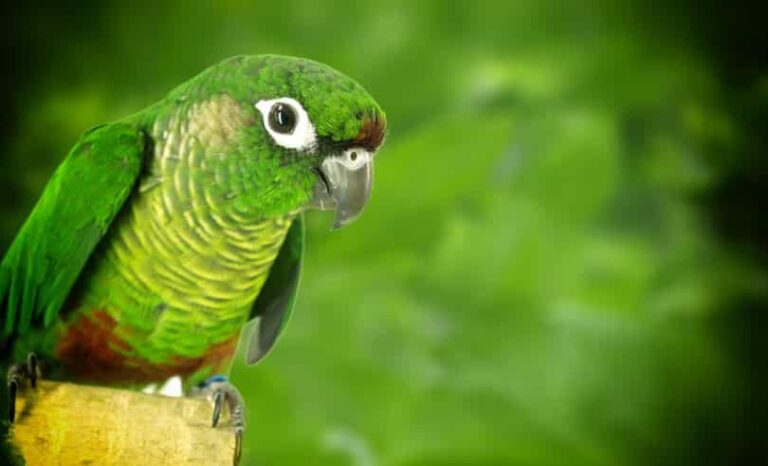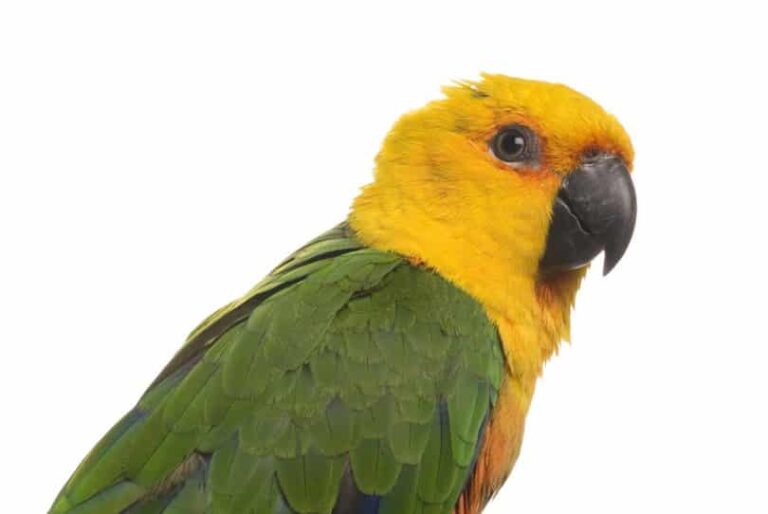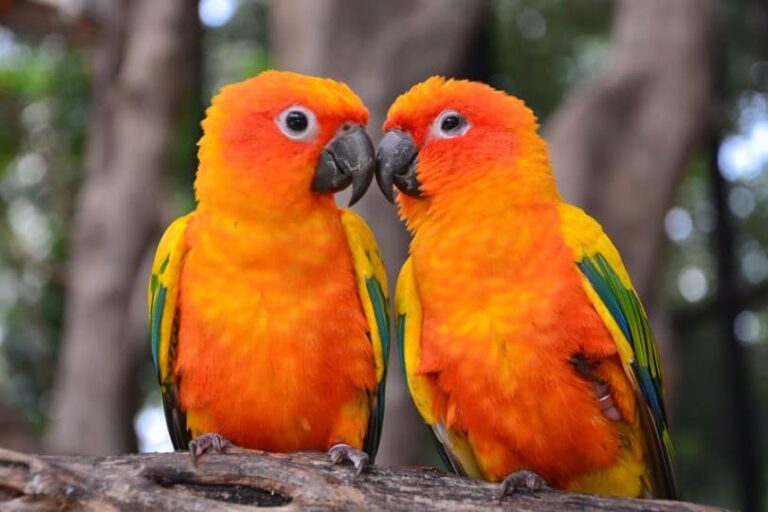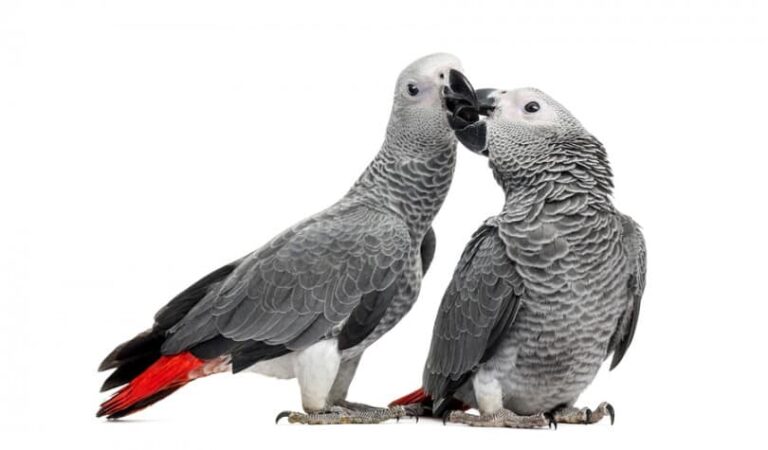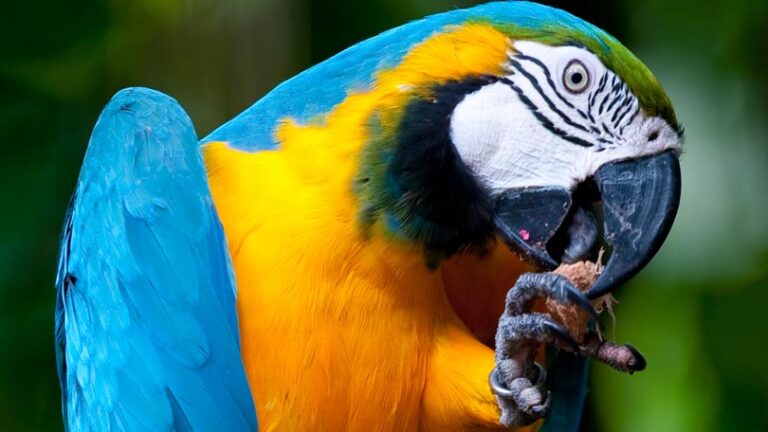Canaries
Canaries or the domestic Canaries are actually wild creatures in a domesticated form. They belong to the Finch Family and Serinus Genus. It is a singing bird loved by all the pet admirers. It is endemic to Macaronesian Islands.
Description
The Canaries have a small body that grows up to 12 to 20 cm in length and weighs about 12 to 30g. They are beautiful birds available in bright colors. The plumage is often found in bright shades like green, yellow, red, orange, and other shades. They live for a maximum of 10 to 15 years, but there are examples of Canaries that live for more than 20 years.
History
The Canaries have been bred as pets throughout history. It was a very popular bird due to its singing quality. Records reveal that it was first captivated in the 17th century. They were introduced to Europe by the Spanish sailors. Their beauty and social nature made it popular among the kings of England and Spain, and these birds became a common sight in their courts. The male birds were more popular due to its singing ability, and were bred by the monks. As the demand for these birds increased, the price also went up. Later, the Italians acquired the female Canary, and they started to breed by themselves. Thus, Canaries turned into a very popular and common bird in every house of Italy. It also led to the development of the different varieties of the Canary breed. The same thing happened in England. In the beginning, only rich people owned these birds, but later, the native people started to breed these birds by themselves, and it gained popularity in England as well.
Types of Canaries
American Singer Canary
These birds are also termed as Yellow Variegated Canary, and have originated in the USA. They are typically a songbird and developed by hybrid process.
Black Headed Canary
These birds are the small finches of Africa and are predominantly black in color, like their face, chest, throat and wings have black shade, but the abdomen is white in color.
Belgian Canary
These birds were the most famous species of Canary in the ancient times. They are usually small headed with long and thin neck that can be easily extended.
Border Canary
These birds have emerged from the common Canary found in the Scottish borders and North England. They have big eyes and round head.
Cinnamon Canary
These birds are known for their varied variety of colorful plumage. Some have a bright yellow or cinnamon red color plumage. Fanciers say that it has the finest feathers compared to all other breeds.
Fife Canary
These birds are brilliant singers, and are kept as a pet for its singing ability. It is available in all colors and relatively cheap in Australia.
Frilled Canary
These birds are loved by fanciers for its ornamental appearance. They are very beautiful and also have the ability to sing. Earlier they were known as Dutch Canaries.
There are many other species of Canaries like:
- Lizard Canary
- German Roller Canary
- Norwich Canary
- Scottish Canary
- Stafford Canary
- Crested Canary and many more.
Habitat
The Canaries are believed to nave originated from the Canary Islands, and hence, they are named after the Islands. This singing bird is also commonly found in the Azores, Madeiras and in small islands situated near the African west coast. Those islands fall in the same latitude as Florida, and these small creatures prefer the tropical climate of those regions. The suitable habitat is the districts covering mountainous regions. It is found at an elevation of 7000 feet above the sea level.
Growing Canaries at Home
Reproduction
Before planning to breed the pets, make sure that the cage is large enough to help them breed the little ones. In the wild, the breeding season starts from the end of March, and they make nests on the top of tall evergreen trees. During the mating season, the male bird starts to attract the female bird, and if the female bird is willing, the mating process takes place. After every two days, the female bird lays 4 to 5 eggs. The eggs are bluish-green color with brown patches over it. The female bird incubates the eggs for at least 13 to 15 days, after which, the tiny little Canaries emerge. Both the male and female Canaries are good parents, and take good care of their small ones by feeding them for nearly 20 days. As the chicks are about 21 days old, they fly independently and leave the nest.
Food
The Canaries can survive on a seed diet, but it is not adequate to provide all the nutrients in the right proportion. This may reduce the immunity power and they will be prone to diseases regularly. Experts recommend that a Canary diet should comprise 80% of pellets suited to the Canary species. This will help to fill any inadequacy of nutrients in the diet. But while buying pellets, make sure they are free from artificial colors, preservatives and added flavors. A good brand like Harrison’s pellet is available in the markets, or good quality Canary or finch mix can also be given. Along with that, provide fresh vegetables and fruits, green vegetables like dandelion leaves, lettuce and leaves of nasturtium and poppy seeds. Always provide plenty of fresh water, and place it in such a location that it will be easily accessible to these birds.
Cage
The suitable cage for the Canaries are flight types, which can allow the bird to expand its wings and fly inside. The regular exercise of flying will help them to stay healthy, and also get rid of them of boredom. For that, the appropriate cage size is 24 x 16 x 16 inch; an even bigger cage will be a good idea. It should have the regular items like food and water dishes, perches, toys, paper and sand for the floor. Along with that, there should be a device inside the cage for the Canaries to easily build a nest, like the nest cups available in the market, and a crib consisting of burlap or hemp, which is suitable and liked by the Canaries. Make sure that the bar spacing is less than ½ inch. Wire cages are recommended, as the bamboo cages or wooden cages are difficult to clean.
Care
The Canaries are very social and easy to breed. They don’t ask for regular attention. They are not at all destructive and never turn aggressive. Their only requirements are a good cage with toys and perches, adequate food and water and a healthy and clean environment. Regularly change the floor paper and clean the cage with mild detergents or disinfectants. Good quality food dishes should be opted for and should be cleaned daily with a good detergent. Occasionally trim their nails, but be careful not to hurt their veins or the pet will bleed profusely and die.

Having discovered a fondness for insects while pursuing her degree in Biology, Randi Jones was quite bugged to know that people usually dismissed these little creatures as “creepy-crawlies”.


